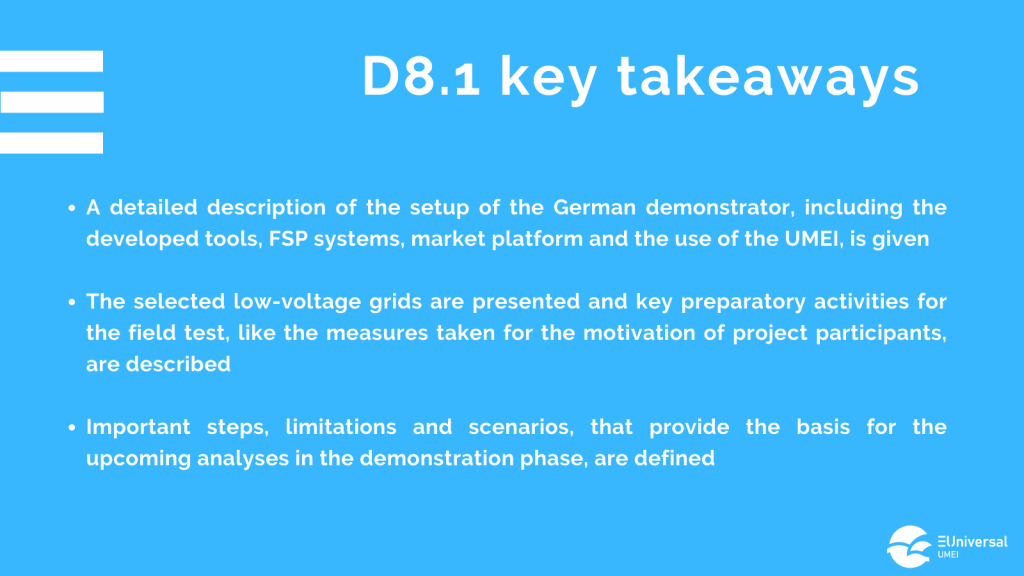The primary goal of the EUniversal project is to identify and overcome existing limitations in the use of flexibility by Distribution System Operators (DSOs).
As such, the project goal is (among others) to enhance the flexibility used in distribution grids, which will need to operate in an overall context of around 50% electricity production from renewables in 2030.
Furthermore, the EUniversal project aims to further guarantee the security of supply, while avoiding unnecessary network investments.
Therefore, within the EUniversal project, a Universal Market Enabling Interface (UMEI) will be implemented to facilitate the use of flexibility services and interlink active system management of distribution system operators with electricity markets.
A set of market‐oriented flexibility services from Distributed Energy Resources (DERs) will be implemented to serve DSOs’ needs cost‐effectively, supporting the energy transition.
Deliverable 8.1 describes the set‐up and integration of grid technical solutions, as well as the API implementation that will allow demonstrating flexibility services developed in the EUniversal project.
It explains the environment of the German demonstration, the market platform, smart grid tools and customer aggregation that will be implemented and tested.
This document is part of Work Package 8 (WP8) which has the main objective to validate the concepts, and tools developed in EUniversal in different contexts and scenarios.
It is one of the three demo sites (alongside with Portugal and Poland) and assesses flexibility for distribution grids and the market capacity to provide new services.
For this purpose, the work package aims to achieve enhanced observability for the active system management in lower voltage levels, by establishing an estimation and forecast of the grid state from the chosen Low Voltage (LV) Grids. This will help to aggregate and predict the flexibility potential in the LV Grid.
Other objectives of the demonstration are the provision of flexibilities through the UMEI to the market platform and the integration into schedule‐based congestion management. In addition to the use of flexibilities for the low voltage grid, the provision to the LV/MV connection point and therefore to the MV Grid is foreseen.

This deliverable was jointly produced by E.ON, Mitnetz-Strom, Nodes, Centrica, N-Side, Vito, KU Leuven and INESC TEC









